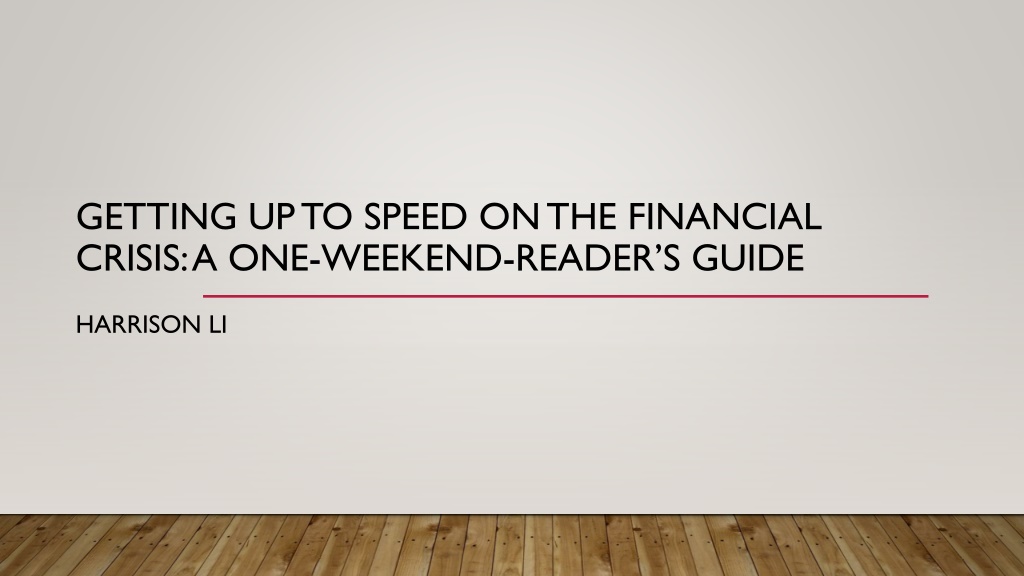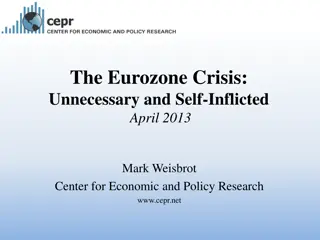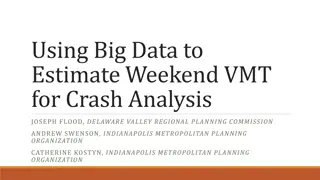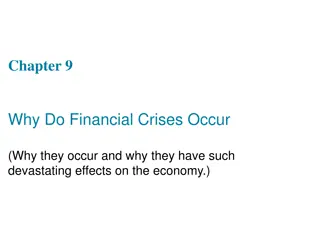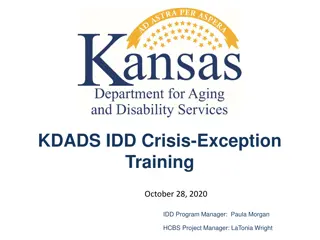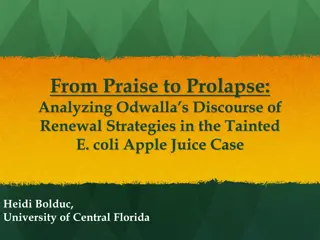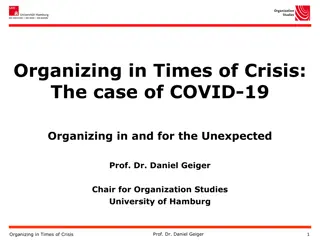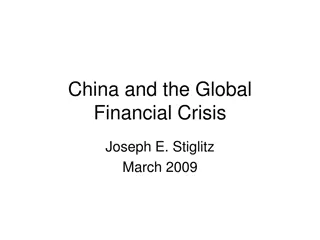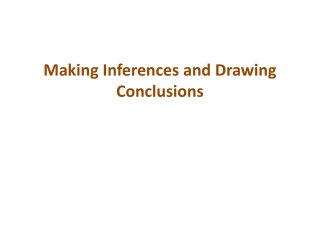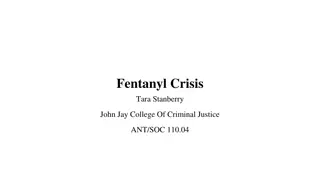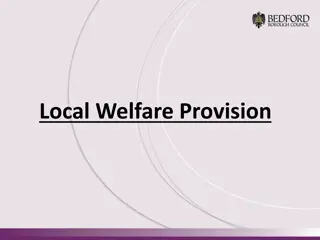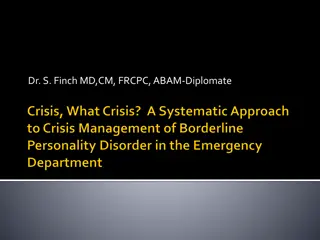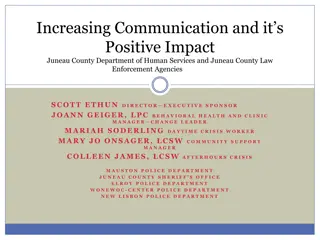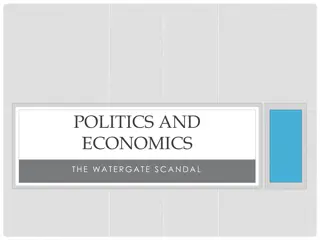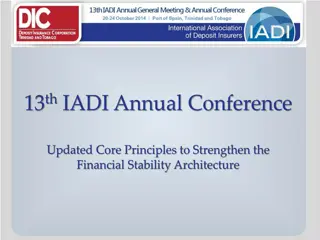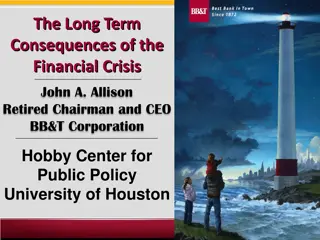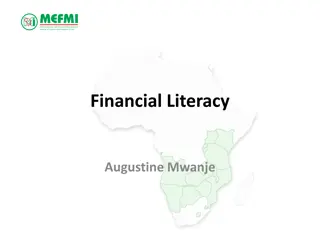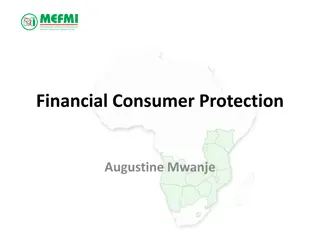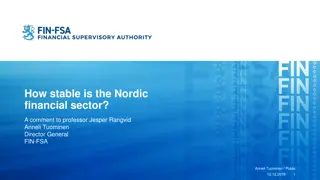Unraveling the Financial Crisis: A Weekend Reader's Guide
Delve into the financial crisis of 2007-2009 with "Getting Up to Speed on the Financial Crisis: A One-Weekend Reader's Guide" by Harrison Li. Explore the bankruptcy of Lehman Brothers, the triggers, vulnerabilities, and events that shaped the crisis. Understand the timeline, system vulnerabilities, and the impact on global markets and economies. Gain insights into the why and what happened during this tumultuous period in the financial world.
Download Presentation

Please find below an Image/Link to download the presentation.
The content on the website is provided AS IS for your information and personal use only. It may not be sold, licensed, or shared on other websites without obtaining consent from the author. Download presentation by click this link. If you encounter any issues during the download, it is possible that the publisher has removed the file from their server.
E N D
Presentation Transcript
GETTING UPTO SPEED ONTHE FINANCIAL CRISIS:A ONE-WEEKEND-READER S GUIDE HARRISON LI
BANKRUPTCY OF LEHMAN BROTHERS The filing for Chapter 11 bankruptcy protection by financial services firm Lehman Brothers on September 15, 2008
1.INTRODUCTION The coverage is from 2007 to 2009 The author summarize sixteen documents,including academic papers and reports from regulatory and international agencies 8 sections in this paper Hope to answer the what happened? question about the crisis and the why question
2.OVERVIEWANDTIMELINE OFTHE CRISIS The financial crisis of 2007-2009 began in earlyAugust with runs in several short-term markets formerly considered safe . Should the safety of their investments come into question,it is easier and safer to withdraw funds run on the bank than to invest time and resources to evaluate in detail whether their investment is,in fact,safe. (Bernanke) During the first half of 2007,problems in the subprime market became increasingly visible and included several subprime originators.
2.OVERVIEWANDTIMELINE OFTHE CRISIS Trigger: Losses on subprime mortgagees,and the prospect of such losses,after the house prices started to decline System vulnerability:Shadow banking system serve as intermediaries to channel savings into investments (Before the crisis the shadow banking system had come to play a major role in global finance.) Main vulnerability:ShortTerm debt,mostly repurchase agreements and commercial paper( IMF estimated that the total outstanding repo in US markets at 20-30 percent of US GDP from 2002 to 2007.
2.OVERVIEWANDTIMELINE OFTHE CRISIS Event exacerbation:Bankruptcy filing of Lehman Brother in September 2008. Confidence in the stability of the financial systems in the United States and Europe was lost.The resulting turmoil led to banks hoarding liquidity. Although the global crisis of confidence had come to an end,policy action continued on an international scale as governments sought to support market functioning and to cushion the blow of rapid economic contraction.
3.HISTORICAL BACKGROUND Accelerations in debt as the key antecedent to banking crisis. Crisis Definition:1)bank runs that lead to the closure,merging,or takeover by the public sector of one or more financial institutions;or 2) if there are no runs,the closure, merging,takeover,or large-scale government assistance of an important financial institution,that makes the start of a string of similar outcomes for other financial institutions. External debt increases sharply in advance of banking crises.Banking crises tend to lead sovereign debt crises (doubt)
3.HISTORICAL BACKGROUND Begin by building a 140 year panel data set for 14 developed countries. Prior to the Great Depression,all three money and credit aggregates have a stable relationship All three increase sharply just before the depression and then collapse in its aftermath.
3.HISTORICAL BACKGROUND Things become interesting in the post WWII period,when both bank loans and bank assets begin to steadily increase relative to GDP,while the broad money to GDP remained stable. Second financial era credit itself then started to decuple from broad money and grew rapidly,via a combination of increased leverage and augmented finding via the nonmonetary liabilities of banks.
3.HISTORICAL BACKGROUND Their paper goes on to explore the impact of this change on the incidence and severity of financial crisis.(Schularick andTaylor) Early warning signal approach Changes in credit supply are a strong predictor of financial crises,particularly when these changes are accelerating.
4.THE CRISIS BUILD-UP Development and the functioning of the shadow banking system: The growth in the shadow banking system was the outcome of several forces. o The traditional banking model became less profitable in the face of competition from money market mutual funds and junk bonds o Securitization,the sale of loan pools to special purpose vehicles that finance the purchase of the loan pools via issuance ofABS in the capital markets,was an important response.
4.THE CRISIS BUILD-UP The explosive growth of securitization was in the six or seven years before the crisis,a growth consistent with the notion of a credit boom. The private-label securitization market grew from under $500 billion in issuance to over $2 trillion in issuance in 2006.
4.THE CRISIS BUILD-UP Who is going to buy theABS --- Institutional cash pools:they are large and centrally managed.The central management of cash pools refers to the aggregation of ash balances from all subsidiaries worldwide in the case of global corporations,or all funds in the case of asset management. The key point about the growth of institutional cash pools is that they have an associated demand for liquidity. The amounts of money that they wanted to allocate to safe asset classes far exceeded the amount that could be insured in the demand deposit amount.(not enough safe assets) The institutional cash pools demand for insured deposit alternatives exceeded the outstanding amount of short-term government guaranteed instrument not held by foreign official investments by a cumulative of at least $1.5 trillion,the shadow banking rose to fill this gap.
4.THE CRISIS BUILD-UP Foreign official investors hold large amount of USTreasuries. Institutional cash pools have to find substitutes:1) Short term bank debt like products, including repurchase agreements and asset-backed commercial paper,2)indirect holdings of unsecured private money market instruments through money market mutual funds. The increase in the production ofABS appears to be a credit boom,and credit booms seem to often coincide with house price increase. Case and Shiller suggest that fundamentals (income and employment) cannot account fro price increases.
4.THE CRISIS BUILD-UP Study done by Reinhart and Rogoff (2008) They study eighteen bank-centered financial crises from the postwar period,including a subset that they call The Five Big Crises of Spain (1977),Norway (1987), Finland(1991) ,Sweden (1991) and Japan(1992) This figure shows that the relationship between real housing prices and banking crises.(Date t is the first year of the financial crisis). They concluded that the financial crisis of 2007-2009 was not special,but follows a pattern of build-ups of fragility that is typical.
5.THE PANICS Two Panics:August 2007 and September-October 2008 An important link between these two crises worked through the repo market,which weakened considerably inAugust 2007,limped along for a year and then partially collapsed after the failure of Lehman. Demand for CP is high enough that financial intermediaries have increasingly made use of the market to finance long-term financial assets.BY July 2007,there was around $1.2 trillion ofABCP outstanding.
5.THE PANICS The figure shows the pattern of runs atABCP programs during 2007. Run as occurring in any week where a program does not issue any new paper despite having at least ten percent of its CP maturing. Beginning in the week ofAugust 7,the frequency of runs increased dramatically, and the likelihood of exiting a run with later issuance fell in tandem.By the end of 2007,about 40 percent of programs were in a run and unable to finance themselves in their traditional short-term market. The programs were more likely to experience a run if they have high credit risk or high liquidity risk. ABCP market fell by $350 billion in the second half of 2007.
5.THE PANICS The sponsor-based rescue of MMFs in 2007 prevented any runs by investors on those funds that year,but may have also solidified the expectation that MMF s would always be bailed out by their sponsors. Such expectation add to the belief that MMFs are super-safe money-like instruments that require no due diligence by investors. In that environment,investors can chase the highest-yielding funds without any perceived risks.
5.THE PANICS PanelA shows the growth of MMFs from 1998 to 2010.The total assets of MMFs were over $2 trillion before theABCP crisis,and by September 2008, MMF assets had increased more than 50%. Lehman bankruptcy was a major shock to MMFs.A sharp outflow from prime MMFs transferred into government only funds.This transfer caused significant disruption in funding markets.(liquidity supply lost) Panel B and C show how the Reserve Primary Fund began to take on more risk in the years before crisis.Prior to 2001,the net yield to investors from the fund was below average for prime funds.However,the relative yields began to creep upwards in 2007 and 2008. As a holder of Lehman commercial Paper,Reserve Primary was unable to maintain its value after the Lehman bankruptcy.
5.THE PANICS ABCP panic was driven by a weakness in subprime market.The eventual run on MMFs was triggered by the bankruptcy of Lehman.The repo market played a key role in this contagion. ( the real losses in mortgages lead to the failure of Lehman and near collapse of the financial system.) The exceed demand of insured deposit leads to trillions of dollars in the repo markets. At the beginning of 2007,average haircuts were near 0. Haircuts get their first shock at the time of theABCP panic and continue a steady rise throughout the next year. 25% haircuts rise from July 2007 to the eve of Lehman Bankruptcy.
5.THE PANICS The subprime failure had a direct effect on manyABCP programs.These runs and related price drops in other subprime-related securities caused unprecedented problems for MMFs. After the initial panic ofAugust 2007,interbank markets were slow to recover,with spreads between secured and unsecured funding remaining at high levels throughout the next year.This pressure also manifested itself in repo markets,where haircuts grew steadily throughout the year,adding to the funding pressure on financial intermediaries. When this pressure finally claimed Lehman Brothers as a victim ,the stressed interbank markets nearly collapsed.
6.POLICY RESPONSE A Brie Review of the evidence on the Short-Term impact of these policies. IMF looked at the short-term reaction of both an ESI (economics stress index) and FSI (financial stress index) Actions by the central banks Interest Rate cuts:only limited evidence of a positive effect on FSI Liquidity support:significant positive effect on interbank spreads and on the broader FSI measure during the pre-Lehman period.In later periods,announcements of liquidity support did not have reliable effects,either because such announcements were anticipated or because concerns were more about solvency than liquidity.
6.POLICY RESPONSE Recapitalization are found to be particularly effective, with significant improvements in an index of bank CDS spreads in almost all countries during the second and third crisis periods. Asset purchases and liability guarantees also show weaker results. Overall,the evidence suggests that liquidity support in the forms described in the table was effective at calming interbank credit markets in the early stages of the crisis.But not after the fall of Lehman.In these later stages,capital injections were the most effective policy.
7. REAL EFFECTS OFTHE FINANCIAL CRISIS The run on short-term debt created fear across the financial intermediary sector, especially after the failure of Lehman Brothers.The widespread loss of confidence, concerns about solvency and liquidity of counterparties,reached the real sector of the economy when intermediaries began to hoard cash and stop lending. LendingVolume in the fourth quarter of 2008 was 47% lower than at the peak of the credit boo,.Lending fell across all types of loans:investment grade and non-investment grade;term loans and credit lines,and those used for corporate restructuring as well as those used for general corporate purposes and working capital.
7. REAL EFFECTS OFTHE FINANCIAL CRISIS Banks are more vulnerable to a run,those that were to a greater extent financed by short-term debt other than insured deposits,cut their syndicated lending by more. Banks in syndicated credit lines where Lehman Brothers was part of the syndicate might experience larger credit-line drawdowns after the failure of Lehman. Decline in lending was in large part an effect of reduced bank loan supply.
7. REAL EFFECTS OFTHE FINANCIAL CRISIS What effect id a reduced bank loan supply have on the real economy study of Campello, Graham,and Harvey (2010) The author directly ask 1050 CFO in 39 countries on whether they were financially constrained during the crisis. (firm s operations are not affected , somewhat affected or very affected by the turmoil in credit markets.) For US firms,244 were unaffected,210 were somewhat affected and 115 were very affected.
7. REAL EFFECTS OFTHE FINANCIAL CRISIS Constrained is only very affected The constrained firms contract the policies much more,in a very noticeable level. 81 percent of the very affected firms reported that they experienced less access to credit. The categorization for firms may confound a number of factors.The authors address this problem by matching constrained firms with an unconstrained match based on size,ownership form,credit rating, profitability,and so on,so that there is a sample of firms that only differs on the degree of access to credit. Firms that are constrained show important differences even before the crisis,and increase very noticeably during the peak of the crisis.
7. REAL EFFECTS OFTHE FINANCIAL CRISIS Overall,the evidence suggests that bank cut back on credit supply,although the demand for credit also fell.The resulting reduction in credit supply had significant impacts on credit constrained firms.
8.CONCLUSION One strong similarity to history comes in the acceleration of system-wide leverage just before the crisis,the strongest predictor of crises in the past two centuries. The recent crisis was preceded by rapid increases in housing prices. The novelty here was in the location of runs,which took place mostly in shadow banking system,including money market mutual funds,CP,securitized bonds and repo agreements. The new source of systemic vulnerability camas as a surprise to policymakers and economists.
OPINIONS This study gives us a comprehensive view of the financial crisis in 2007 2008 The studies are rich in data and quant stuffs. Some studies are too qualitative,especially the surveys. It needs to generate some long term effect of the government policies in the sixth part.
